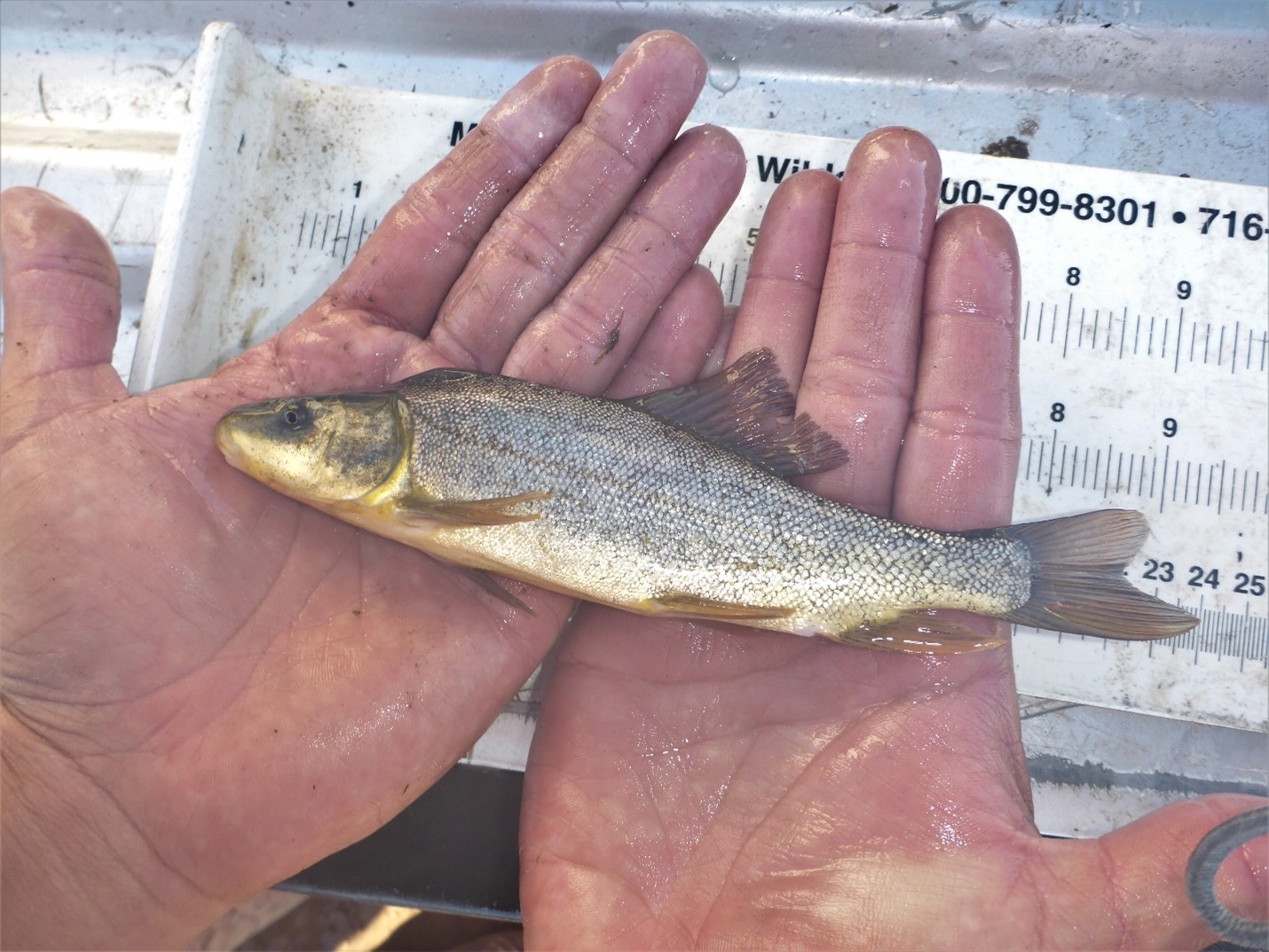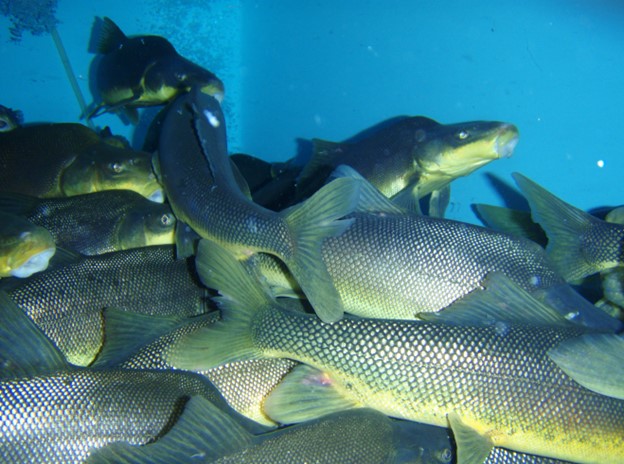Fish recovery program efforts credited
 Juvenile razorback sucker produced in floodplain wetlands during 2022. Photo by Mike Partlow, Utah Division of Wildlife
Juvenile razorback sucker produced in floodplain wetlands during 2022. Photo by Mike Partlow, Utah Division of Wildlife
The Green River razorback sucker population got a significant boost in numbers of wild-spawned juvenile fish, thanks largely to the ongoing efforts of the Bureau of Reclamation and its partners in the Upper Colorado River Endangered Fish Recovery Program.
The endangered razorback sucker, named for its prominent dorsal keel, evolved in the Colorado River Basin over the last three to five million years and is found nowhere else in the world.
While hundreds of thousands of razorback sucker are found throughout the basin, the vast majority originate in hatcheries and are stocked by the truckload in various locations in several Upper and Lower Basin states. Though these fish readily spawn and produce larval fish every year, the larvae rarely survive to adulthood.
During late May and June of each year, newly hatched razorback sucker larvae emerge from spawning beds in the Green River near Jensen, Utah. Their odds of survival to adulthood initially rests with access to warm, food-rich floodplain wetlands along the river’s riparian corridor. Access to these rearing habitats depends on spring peak flows, which need to be large enough to connect the river to its floodplains. Once established in these productive areas, a half-inch larval fish can reach five inches or more in just a few months, provided water quality remains optimal and density of predators is relatively low.
Reclamation has worked with Recovery Program partners since 2012 to ensure that the timing of spring peak releases from Flaming Gorge Dam coincides with the presence of razorback sucker larvae—a management action known as the Larval Trigger Study Plan, or LTSP.
Several factors converged to make 2022 a record year for razorback sucker. Operations under the Drought Response Operating Agreement (DROA) allowed for additional water releases from Flaming Gorge Reservoir above and beyond what would normally be released in an otherwise moderately dry year. This additional volume of water was intended to help maintain lake elevations at drought-stricken Lake Powell, and a portion of it was released during the spring peak period to combine with Yampa River peak flows when razorback sucker larvae were present to create a 17,000 cubic feet per second peak flow in the Green River near Jensen, Utah, pushing the larvae into floodplain wetlands to mature.
“Reclamation operators with the Power Office and Flaming Gorge Dam expertly balanced the dual objectives of flows for endangered fish and additional water releases for DROA, and the integration of the two was instrumental in allowing large numbers of larval fish to access Green River floodplain wetlands,” said Fish Biologist Dave Speas of Reclamation’s Upper Colorado Adaptive Management Group.
Habitat management that occurred at Stewart Lake (an important razorback sucker wetland near Jensen, Utah) over the preceding several years also helped increase population. Prescribed burns and other forms of vegetation management conducted since 2018 created considerable acreage of open water at Stewart Lake, and water quality was maintained during the hot summer months through the addition of supplementary water diverted from Red Fleet Reservoir miles upstream on Big Brush Creek.
Additionally, food availability for young razorback sucker was maximized mostly by keeping non-native fish out of the wetlands while allowing tiny razorback sucker larvae in, reducing the number of mouths to feed.
In a single summer, the joint coordinated effects of dam operations, habitat management and non-native fish management doubled the number of wild-spawned razorback sucker produced in wetlands since LTSP was first implemented in 2012.
|
By the numbers:
|
“Wild fish are much better at survival in the wild than their hatchery counterparts, and if it weren’t for the efforts of biologists and managers working on LTSP, there most likely wouldn’t be many wild-spawned razorbacks in the Green River,” said Speas. “While biologists strive to understand why this is so, conservation actions such as LTSP are a viable means to improve the razorback sucker’s status.”
The razorback sucker is currently being considered for downlisting from endangered to threatened under the Endangered Species Act, and if approved, this milestone would be due in no small part to the many biologists and water managers who work every year to implement LTSP.



